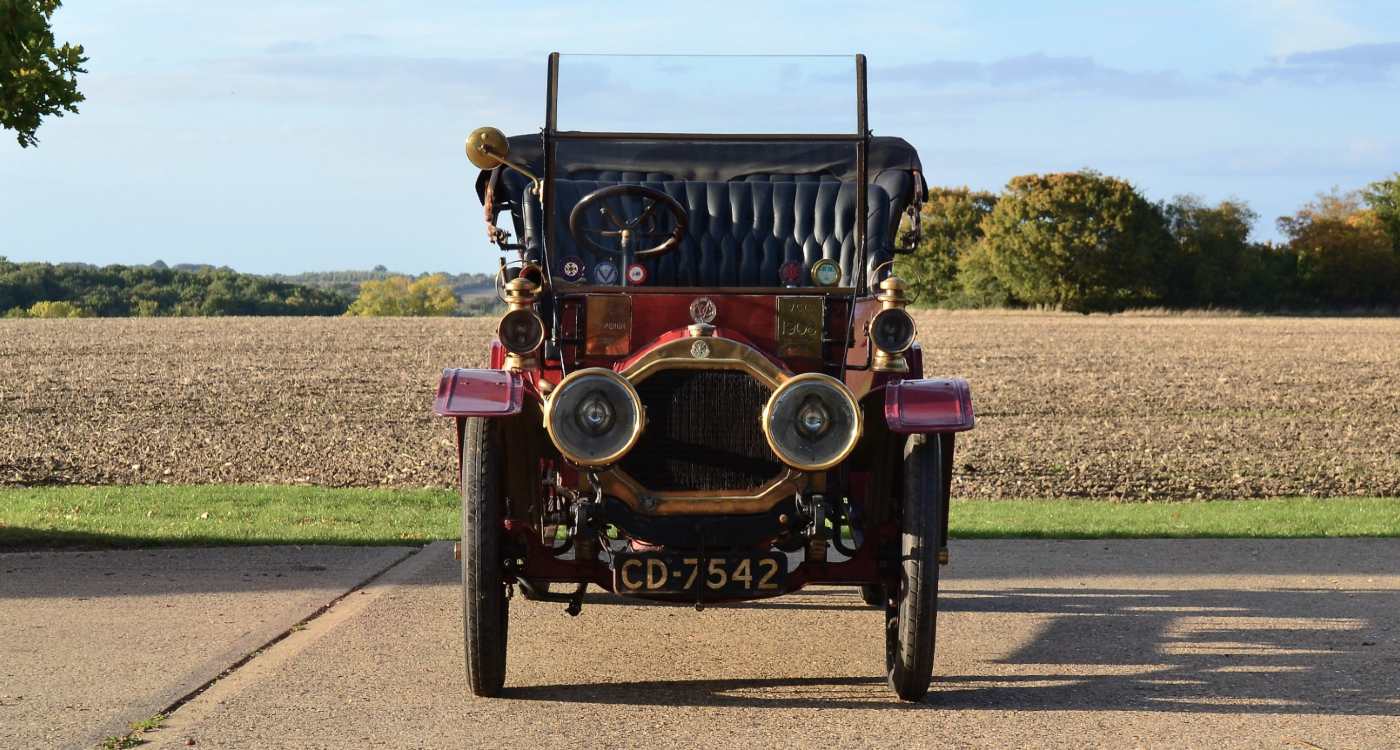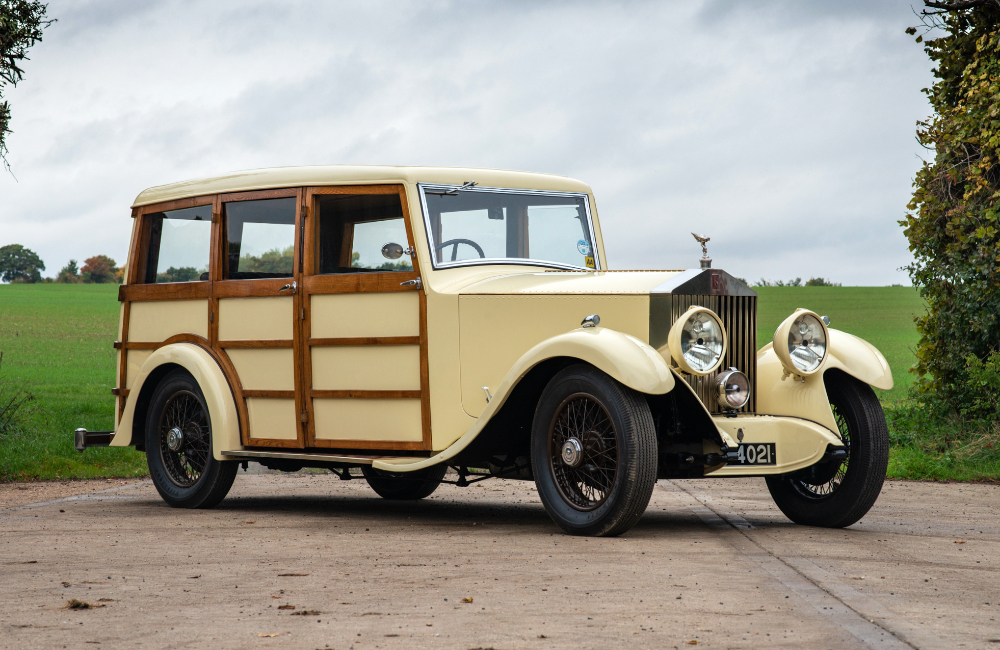- Features in Michael Edwards illustrated guidebook on De Dion Bouton
- VCC Dating Certificate issued in 1977 with accompanying letter
- Rare Double Phaeton Coachwork
- Large extensive history file including vehicle logbook
De Dion-Bouton company dates back to the early 1880s, when Jules-Albert de Dion entered into partnership with the engineer M. Bouton to develop and market a steam tricycle. A factory was set up on the Seine at Puteaux and it was here, in 1899, that they built their first small motor car. An instant success, it was followed by numerous different models over the ensuing years. De Dion engines were also supplied in vast numbers to other car manufacturers. There was a time, around 1900, when the De Dion factory was the largest car manufacturer in the world.
The Company was ambitious, embarking on ground-breaking continental races such as the Paris to Peking and The Great Race of 1908 from New York to Paris. They produced the four-cylinder cars, with conventional radiator and bonnet arrangement, sliding mesh gearboxes and the classic De Dion back axle from 1905 onwards. It was always the policy of the company to produce the complete car themselves, from the factory-built coachwork right down to their own De Dion sparking plugs. Other advanced features for their time, were the bronze-faced single plate clutch and the full pressure lubrication system which supplied the main bearings, big ends, and camshaft bearings. These cars had a reputation for reliability and ease of driving.
Ironically, having been in the forefront of development and design being the first manufacturers to offer a V-8 engine in a production car, it was eventually to be the lack of innovation that would lead to their decline. De Dion-Bouton built their last car in 1933 and the firm finally disappeared with the advent of the Second World War in 1939.
Summarised by Mike Devenish in 1987, “This particular car is the 18 H.P. Model BI, of 2800 cc. capacity, fitted with the standard Double-Phaeton coachwork and built early in 1908. No other example is known to have survived. Unfortunately, the early history of the car remains largely a mystery. The exceptional mechanical condition and originality suggest very little use before being laid up for a great length of time. This is confirmed by the lack of any original registration, the present number (appropriately enough a Brighton registration) having been only recently allocated. The dashboard, however, carries the original import licence (the triangular plate), in addition to the manufacturer’s and agent’s plates. Some coachwork restoration is known to have been undertaken shortly after World War II, including the replacement of the wings and bonnet, before the car relapsed, once more, into hibernation.”
After WWII CD 7542 was stored until 1975 when the car met better fortunes. Unfortunately, by this time it had been partially stripped with many parts left to rust. Thankfully almost all the original parts were still present with the car, and in no less than three years CD 7542 was subject to a sympathetic engine and coachwork restoration to original condition and specification. Since 1978 the then owner covered well over 13,000 miles on the road, logging every single excursion in a journal up until 2006 when the car was sold to the current owner.
CD 7542 has participated in 13 major veteran car rallies, attended numerous events, and even made a pilgrimage to France, entirely under its own steam. Being a reliable car, it has been used all year round in preference to a modern car proving its reliability and useability.
There are not many 100-year-old cars that still carry their original coachwork whilst also having many original mechanical parts and beautiful Bleriot headlamps. With handwritten notes on how to drive the 18 H.P. and technical notes dating from the restoration, this De Dion Bouton has a special and unique history benefitting from regular servicing and maintenance which has meant CD 7542 is a useable, reliable, and extraordinary veteran vehicle.






















